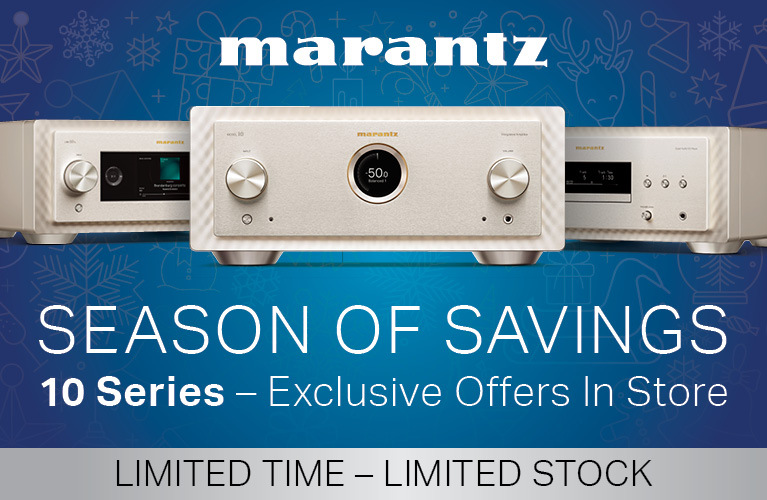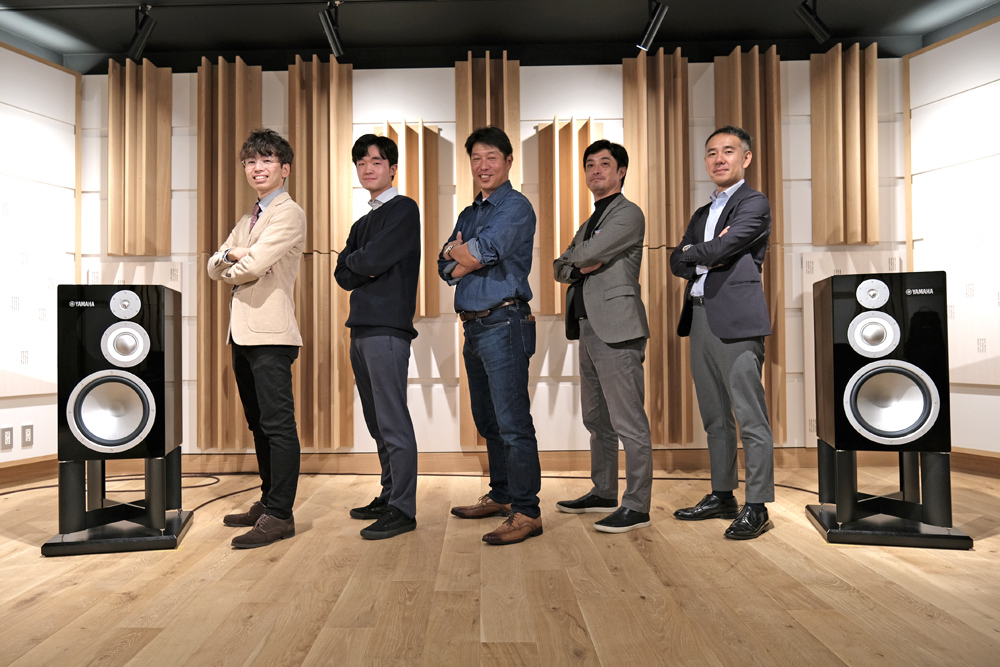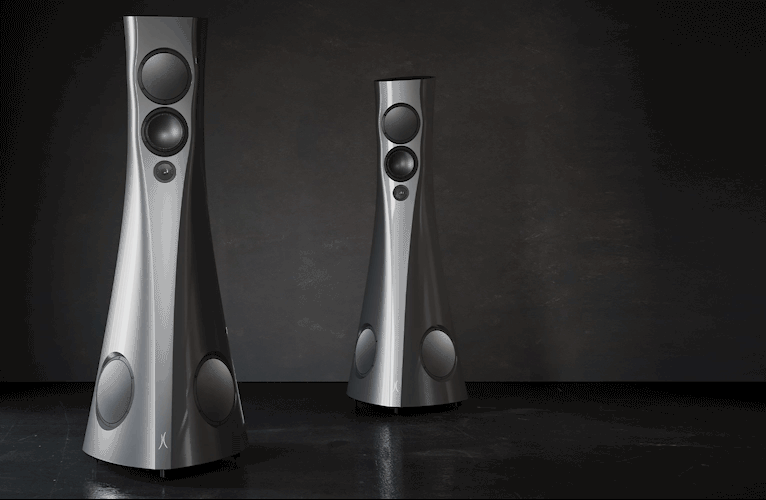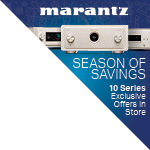As I enter the sprawling reception area of Yamaha Corporation’s Hamamatsu headquarters I find, dead-centre in the space, an arrestingly realistic, life-sized sculpture. It’s by artist Junya Okabe from BLAST and part of the ‘Animals As Art’ series, depicting a dormant, yet protective polar bear mother, cub resting by her side. Yet, despite being inactive, the exhibit symbolises an attentiveness, given its location at Yamaha HQ. There’s a of sense serenity; the majestic animals appear… comforted, calmly nestled by the passive enjoyment of music. That, right there, represents Yamaha, the world’s largest and longest-running electronics and musical instruments company. So, I’m here to experience the company’s maxim philosophy permeating across all of its audio products which, in two simple words, encompasses an ideology shared by all music lovers. Yamaha calls it ‘True Sound’.
Springing from a Reed
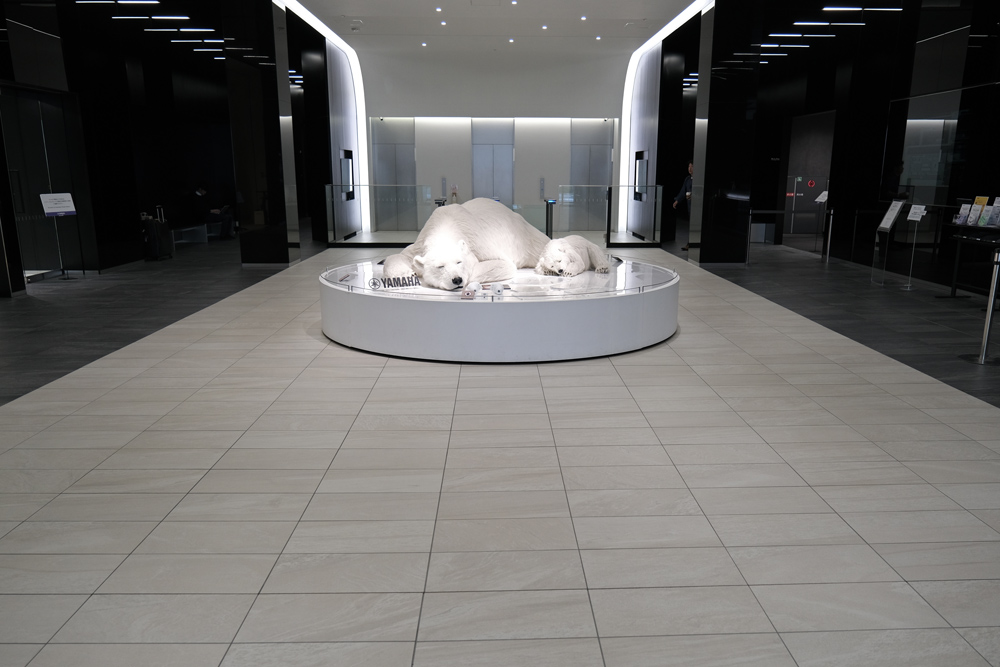
As we moved on from the bear-populated reception area – myself and Yamaha media contacts Kazuaki Ohsawa Supervisor Home Audio Group and So Takeushi from the Home Audio Group Business Development Department – we’re greeted by a guide who will take us through the ‘Innovation Road Corporate Museum’. The museum is a 1500 square meters exhibit-based representation of Yamaha’s past, present and future. It’s been open to the public since July 2018 and serves as a showcase of all that is Yamaha, from Home Audio, Pro Audio, Event and Concert electronics and, of course, musical instruments. That last category, in itself, spans a cornucopia of guitars – both acoustic and electric – pianos of all types, including special editions of Yamaha’s best Grand Pianos (like the Gustav Klimt edition), wind instruments and much more.
No ‘True Sound’ story can be rightly told without a summation, even in part, of Yamaha’s incredible legacy across the full music production and reproduction spectrums. Our journey through Innovation Road takes us right back to Yamaha’s nascent days when founder Torakusu Yamaha-san, after repairing a reed organ, decided to produce his own.
I see a primitive wooden mini-piano/organ signposted with “circa the start of operation, Manufactured by Yamaba” (Yamaba being the original company name, only changed because Yamaha was thought to be more Western-friendly). In fact, the company’s first piano was manufactured in 1887 and its first Grand Piano in 1902. That’s longevity, right there.
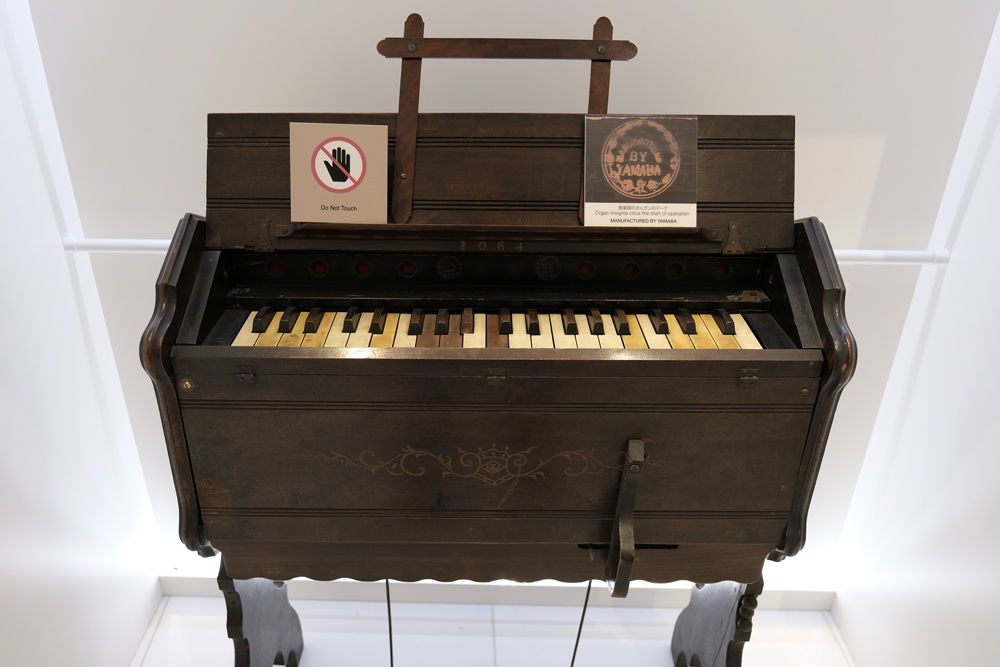
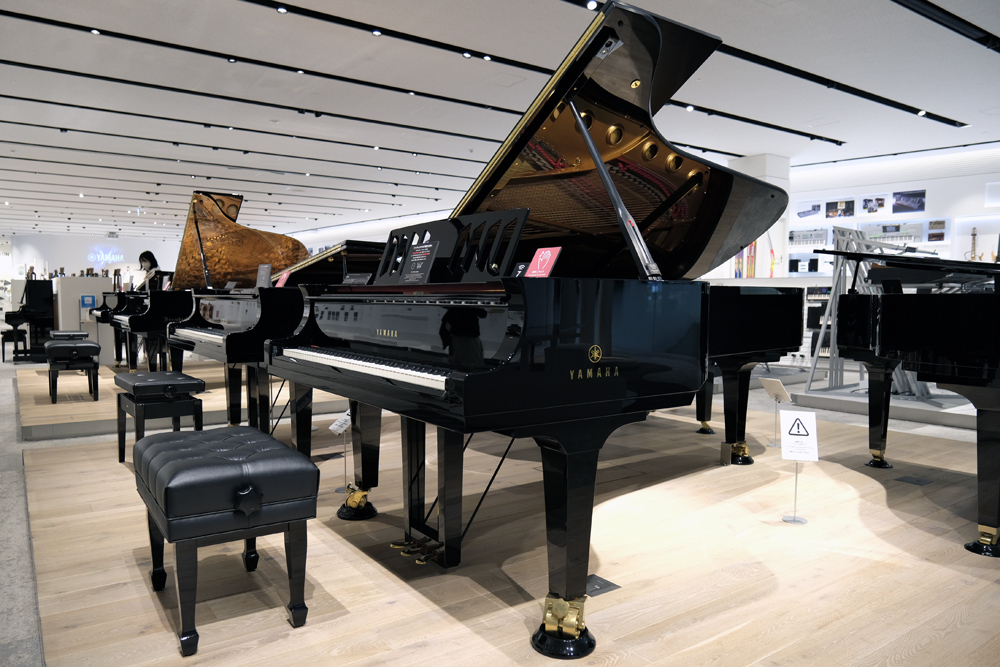
Each division of the many-tentacled Yamaha Corporation is represented by an abbreviated historical path at Innovation Road. Through this ‘History Walk’ I even see Yamaha’s very first motorbike, the gorgeously styled dual toned YA-1, a wonder of mechanical design created in 1955.
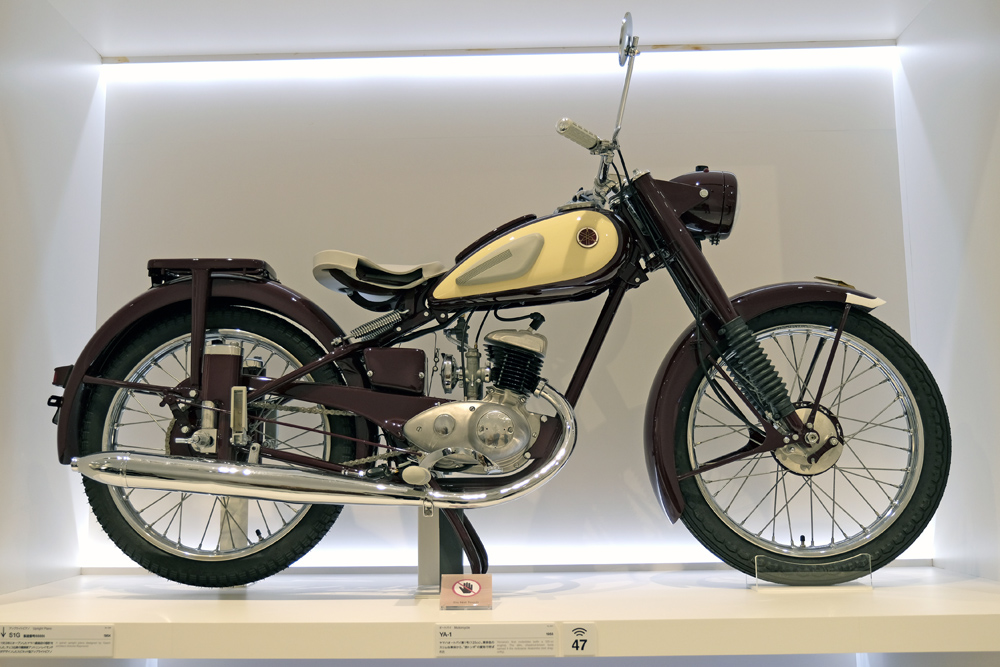
I marvel at the sheer depth of the musical instruments on show. Importantly, the whole gamut of the instruments on display are available for the public to touch, feel and play. Indeed, while walking through the various sections, I’m provided with a soundtrack by musicians – budding and advanced – playing, auditioning and experiencing the company’s creations.
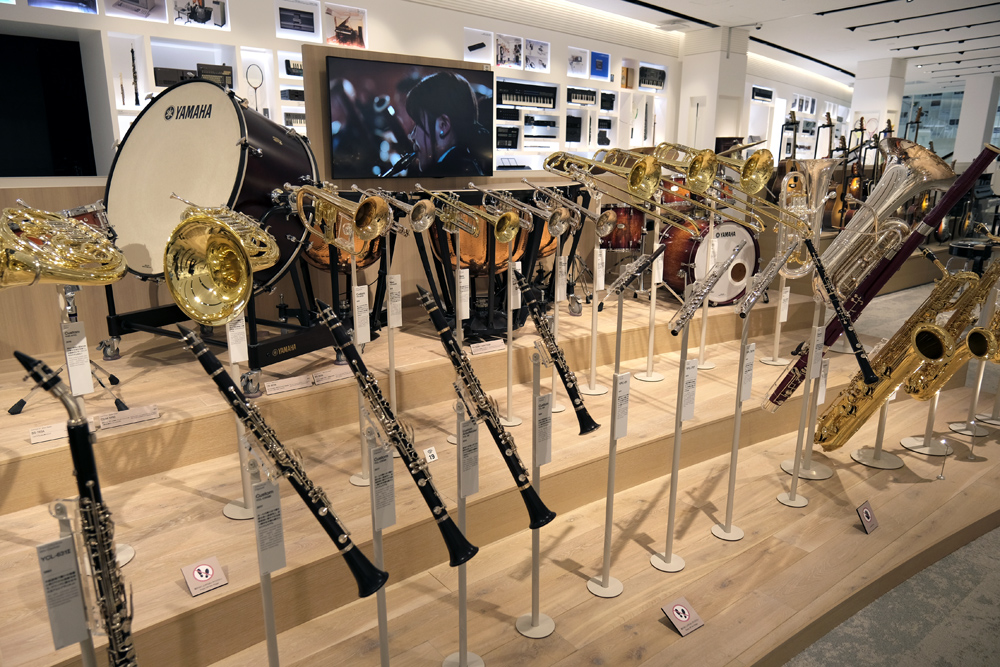
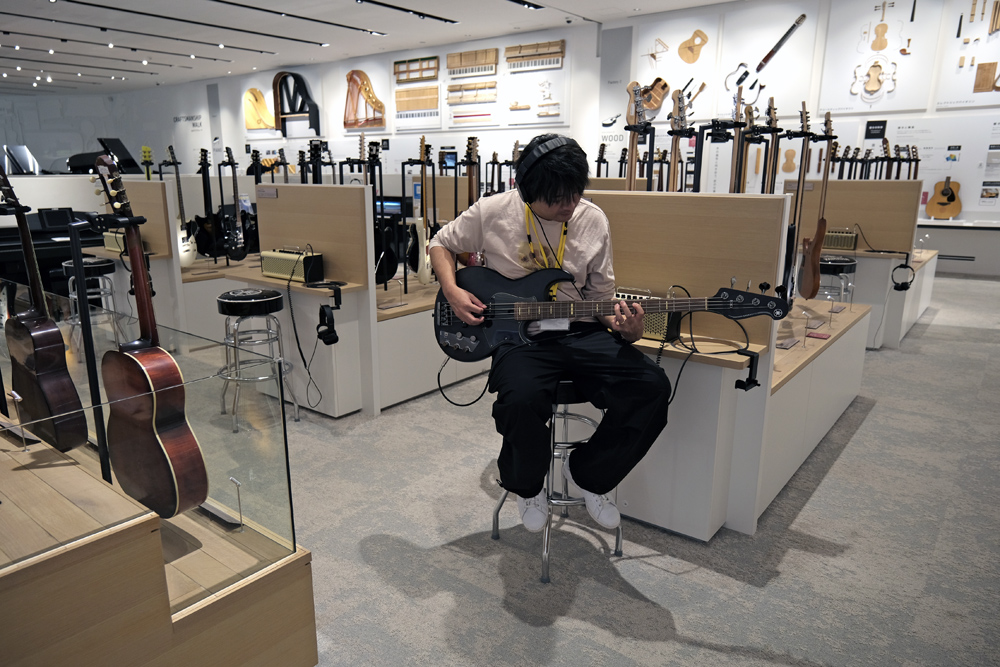
In a darkened exhibit area, and as a testament of Yamaha’s roots in live music, a ‘Virtual Stage’ shows projected images of musicians – a pianist, an acoustic bass player and a drummer – displayed alongside the real instruments. The piano, standup bass and full drum kit are made to self-play in concert, and in synch, with the musicians being projected. A virtual performance and a variation of True Sound. So cool.
Another affirmation of the company’s cultural signature steeped in music, is an exhibit featuring a massive, curved widescreen in the ‘Super Surround Theatre’ where a projection of a full concert orchestra spans 220 degrees. It's a visual version of surround. The orchestra plays a number of iconic works reproduced via Yamaha’s 108.6 channel audio system (yes, you read it right…) playing in ‘ViReal’ 3D sound technology. Yeah, it’s like I’m there…
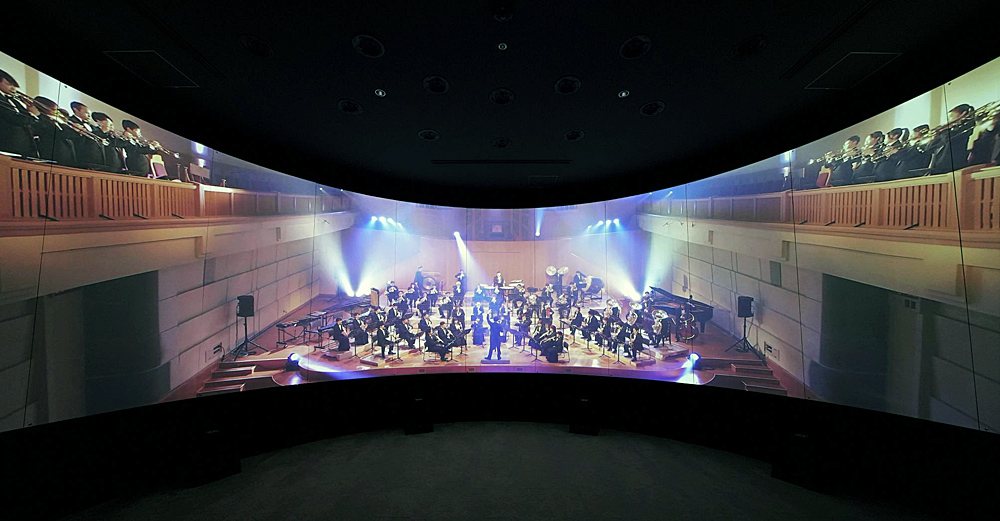
Grand Designs
My journey continues to Kakegawa, a quick 30 minute drive from Hamamatsu, where Yamaha has a massive multi-building facility dedicated to manufacturing a wide variety of pianos and other instruments. This facility also produces Yamaha’s flagship Grand Pianos, some of which are bespoke models for renowned pianists like Elton John, Alicia Keys, Chick Corea, John Legend, Michael Bublé, and on and on.
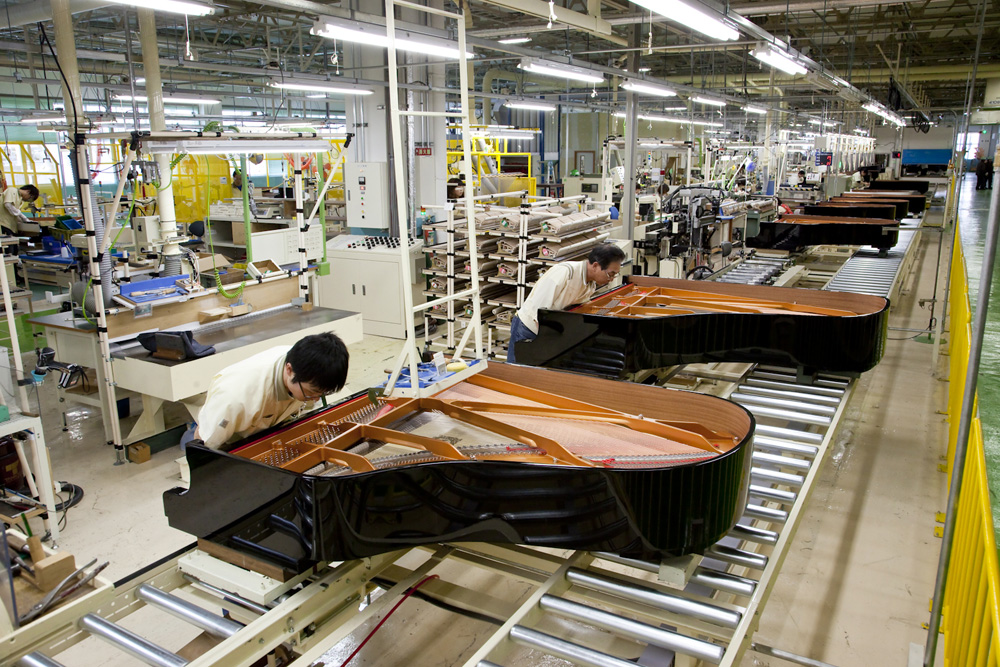
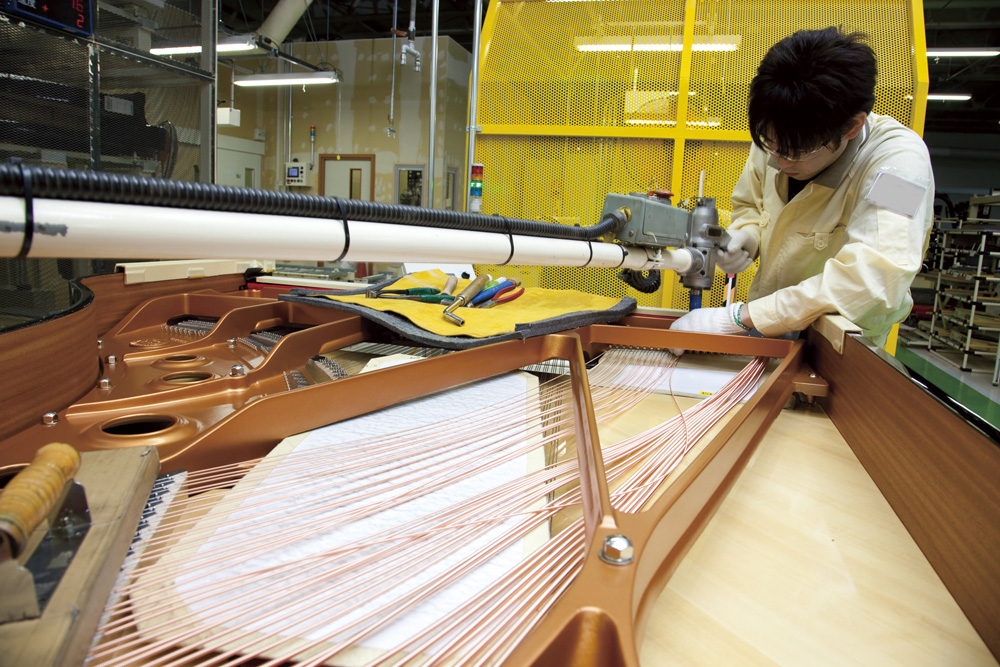
I’m impressed by the level of care taken through the entire piano production process. Each unit is taken through a number of stages of assembly and structural construction, ending up in a section of the factory floor dedicated to tuning each hammer/key, one by one, through a number of phases. Even the felt density of the hammer is adjusted and fine-tuned by hand, with the craftsperson carefully puncturing the head felt in order to tune the ultimate sound. It’s a painstaking process given to the factory’s most experienced and dedicated personnel, all pianists, who have been refining Yamaha instruments for many, many years.
Heck, it’s even worth mentioning, our guide back at the Innovation Road Museum was a skilled pianist. At Yamaha, there are many musicians, and the company holds regular “band nights”.
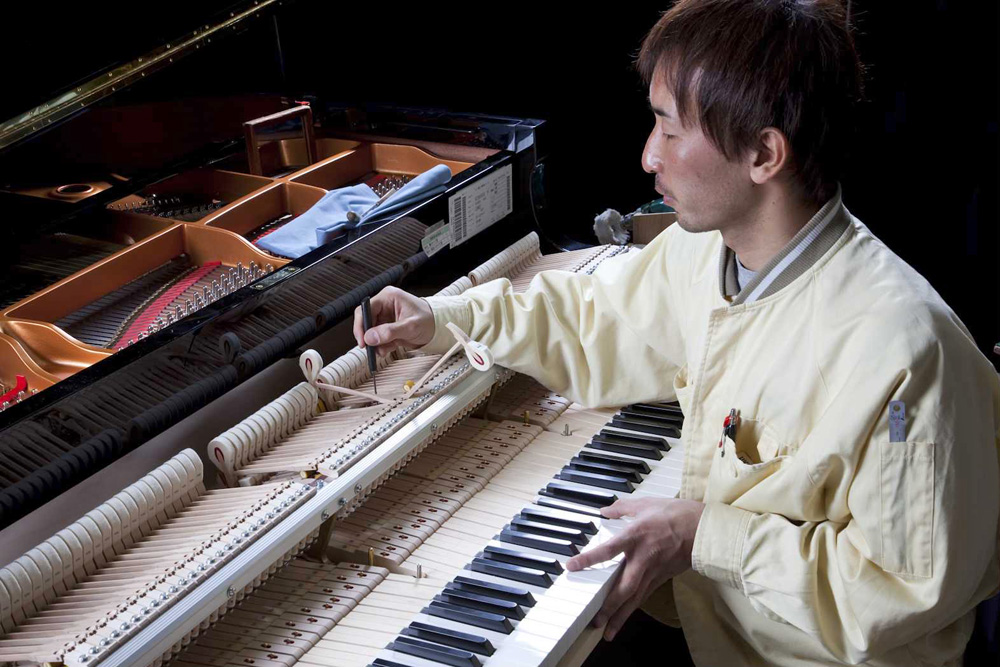
Shortly after the Kakegawa piano factory tour, Kazuaki, So and I are joined by Susumu Kumazawa True Sound Team Leader and Manager of the Audio Group, Ikuo Tanaka Group Manager Marketing & Sales Group and Kurato Muramoto Home Audio Marketing. In a conference room, Kumazawa-san presents informational PowerPoint slides depicting the various ideologies behind True Sound.
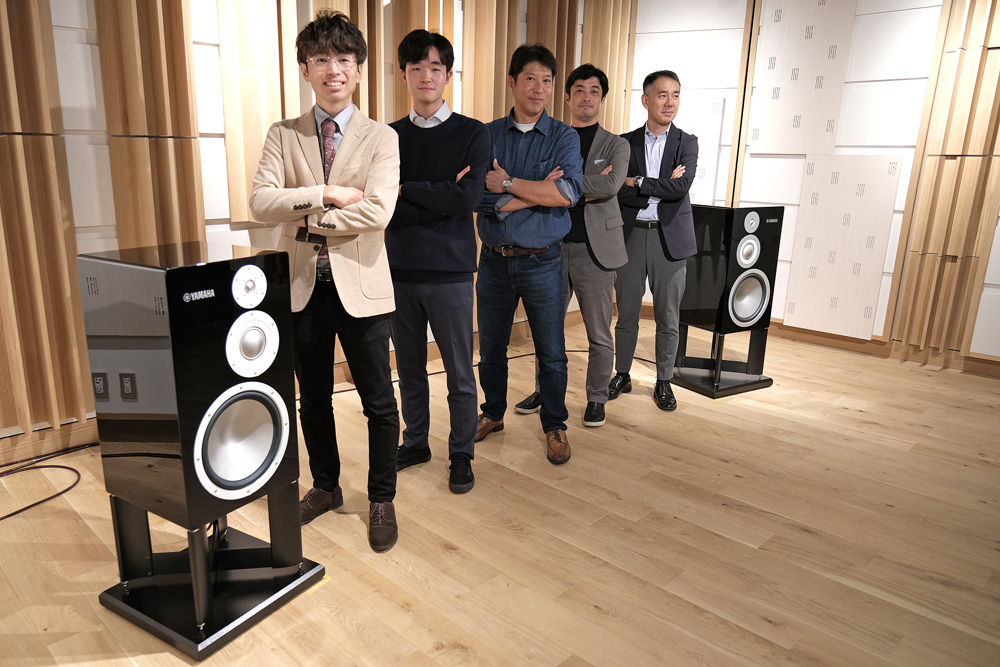 Kazuaki Ohsawa, So Takeushi, Susumu Kumazawa, Ikuo Tanaka and Kurato Muramoto.
Kazuaki Ohsawa, So Takeushi, Susumu Kumazawa, Ikuo Tanaka and Kurato Muramoto.
Having taken all that in, we move on as a group and enter a large space where the flagship YH-5000SE headphone drivers are produced. YH-5000SE are a direct descendant of Yamaha’s legendary HP-1 introduced in 1976 and which sported the first generation of Orthodynamic headphone transducer technology.
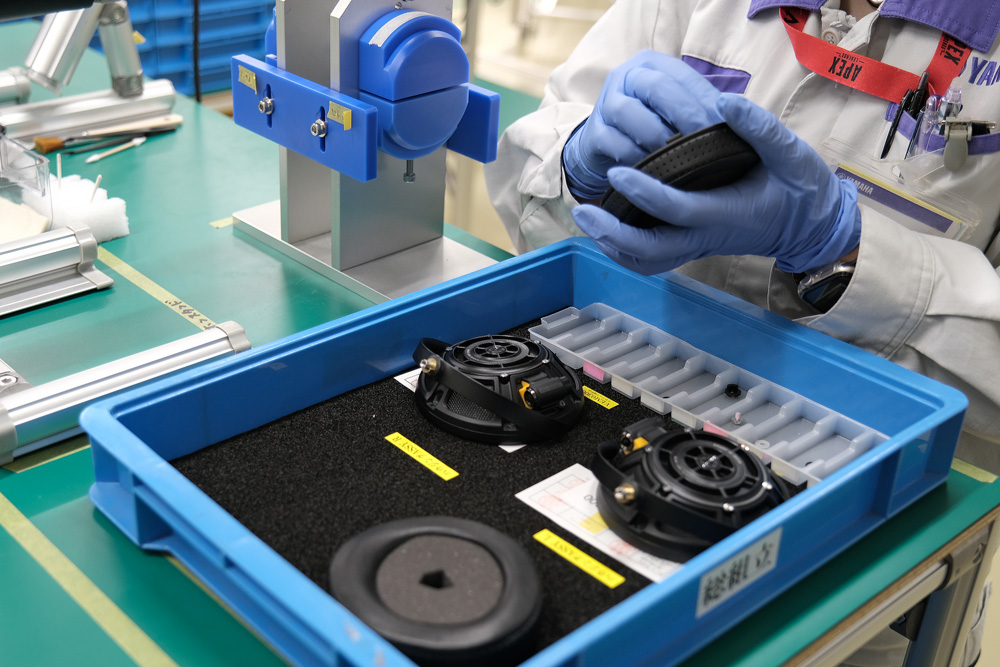
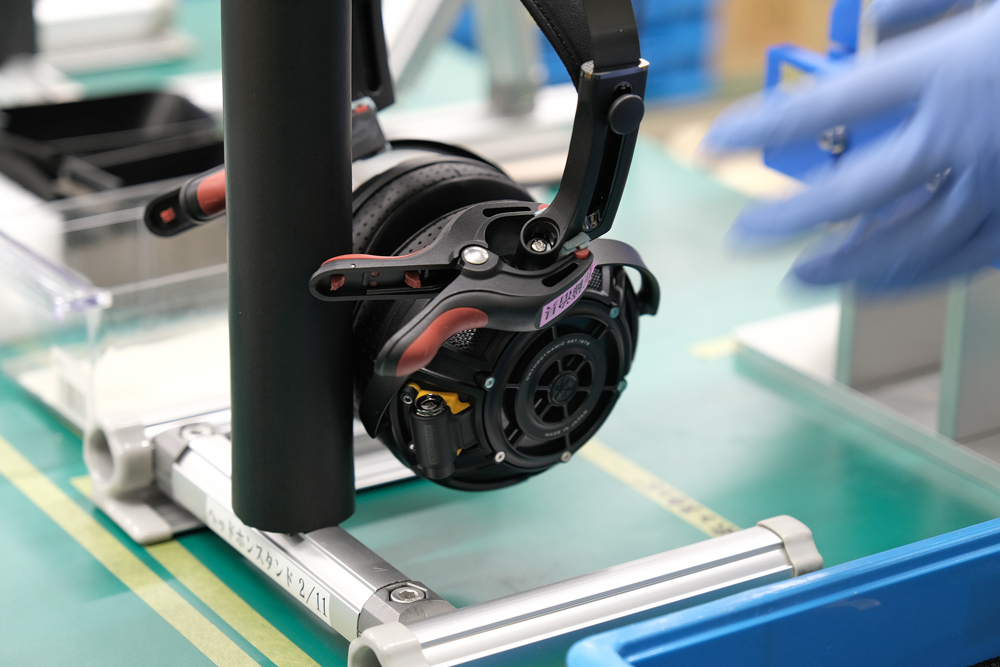
In this open area, the Orthodynamic drivers are hand-made, measured and rigorously tested by dedicated engineers like Ryo Hadano who is responsible for the YH-5000SE’s acoustic design. Another engineer, Chikara Kobayashi, handles mechanical aspects of the headphones.
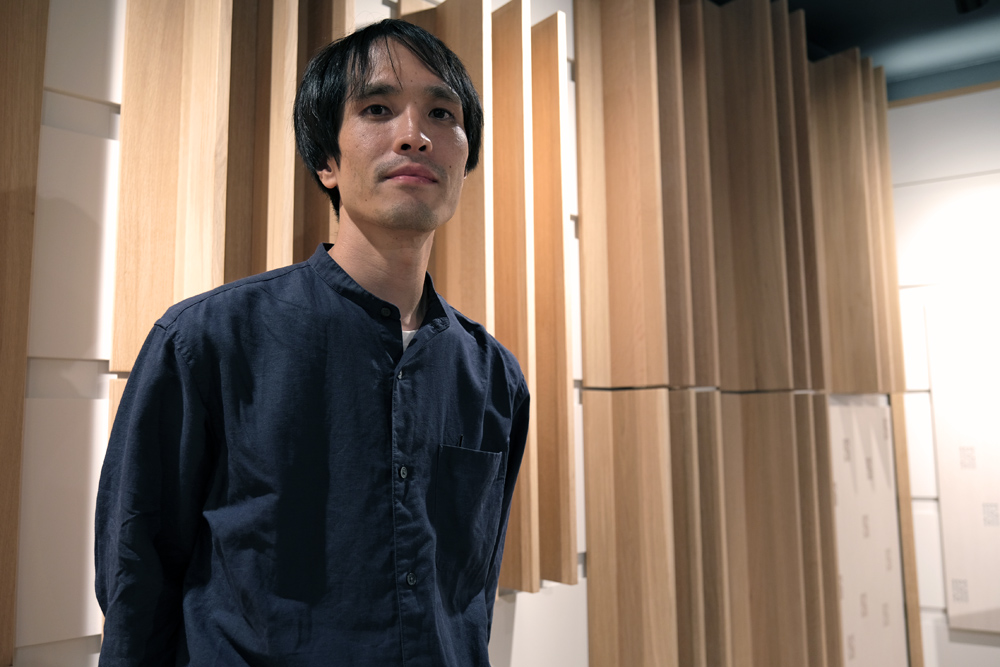 Ryo Hadano, Assistant Manager Product Development Department.
Ryo Hadano, Assistant Manager Product Development Department.
While the two previous factors of design apply to all headphone products, Yasuaki Takano is in charge of “Affective Evaluation”, a criterion which examines aspects of sound performance such as how we perceive music and sound in general. This also encompasses design practicalities including wearer comfort, ergonomics and more. Yamaha has developed dedicated systems, measuring protocols and hardware/instruments to test scientifically and empirically many of these elements of design. These are systems independent of the ones used for acoustic parameters.
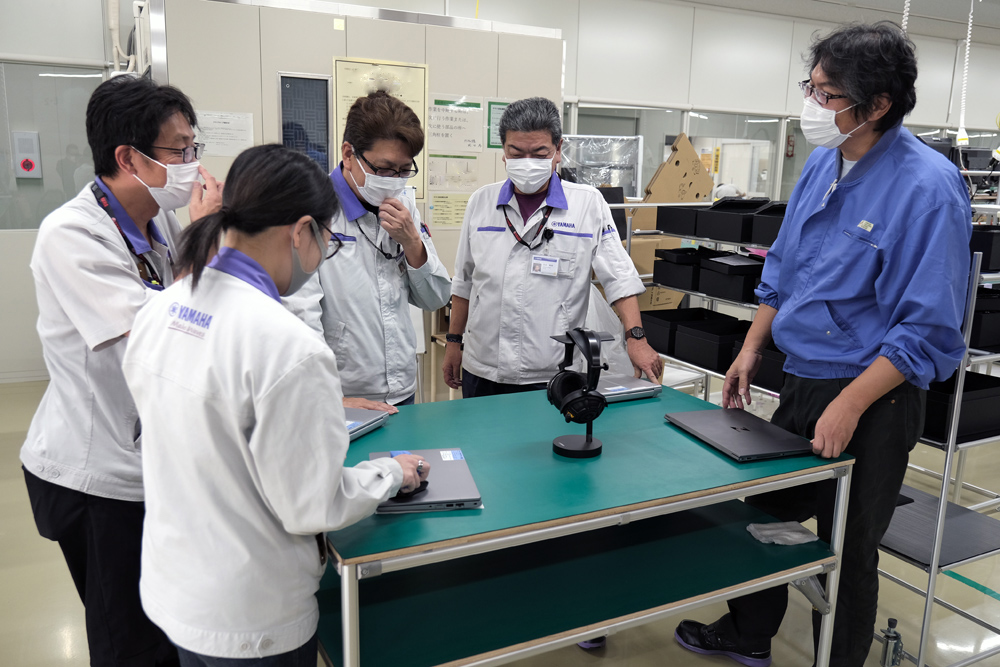
So, What is True Sound?
The current philosophy of the Audio Division – and by that, I mean that it permeates across all of Yamaha’s audio products – is the concept of True Sound. As simple and, at the same time, as cryptic as the term may sound, Yamaha has attributed very specific sonic qualities to it. These qualities are considered archetypal to its principles.
Yet, the True Sound phrase is not purely a marketing slogan. It was conceptualised in conjunction with the teams charged with engineering and designing the very products the term encapsulates. Their determination was to express the sonic attributes deemed essential for music reproduction excellence… in as simple and succinct a way as possible and by adhering to the sonic and engineering targets without compromise.
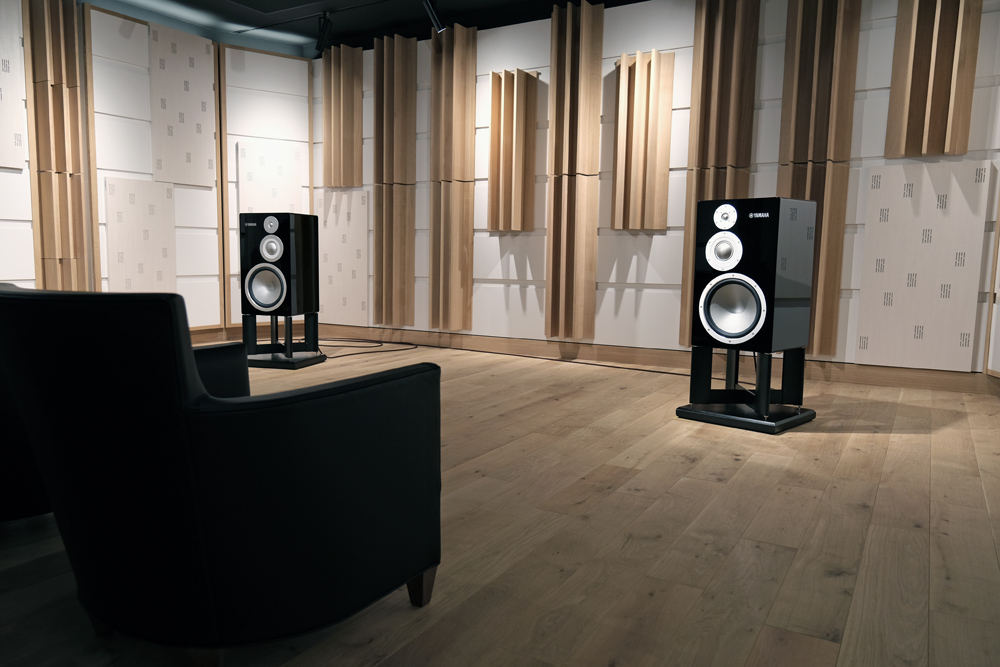
So, True Sound essentially encompasses:
Tonal Balance – As True Sound Team Leader Susumu Kumazawa explains in Part 1 of this SoundStage! Australia Talks episode, he considers this to possibly be the most important aspect of True Sound, in light of Yamaha being a major manufacturer of musical instruments. So, the intention is to reproduce instruments and vocals with committed precision and complete fidelity in relation to the original (Yamaha also manufactures high quality microphone systems). For example, it’s what makes a guitar sound like a guitar.
Manifested by:
NS-5000 speakers: Zylon Unified Tone Colour, High Quality Parts Crossover Network.
C-5000 preamplifier and M-5000 power amplifier: Floating & Balanced Power Amplifier with MOS-FETs, Pure Brass Speaker Terminal Block.
GT-5000 turntable: Heavyweight Inner & Outer Platters.
YH-5000SE headphones: Orthodynamic Driver.
Dynamics – This aspect of True Sound aims to faithfully express the contrast between pianissimo and fortissimo. As Yamaha puts it, it’s for maximum contrast between “silence and energy”. It’s always been one of my personal points of importance (alongside timbral accuracy); live instruments don’t have limitations in terms of conveying their inherent dynamic power. Just experience a drum kit in proximity for an example of natural, true dynamic energy.
Manifested by:
NS-5000 speakers: Laser Vibrometry, Finite Element Analysis.
C-5000 preamplifier and M-5000 power amplifier: Low Impedance Design.
GT-5000 turntable: Pure Straight & Short Tonearm.
YH-5000SE headphones: Ultra-Lightweight, Thin-Film Diaphragm.
Sound Image – This element seeks to recreate a spatial representation of the recording. With just two speakers, it creates a mirage, a soundfield, which will spread wide, deep and tall beyond the plane of the speakers. Instrument and vocal images should be focused and accurately positioned within the soundstage. It recreates the sonic spatial image with “nuances, mood and atmosphere”.
Manifested by:
NS-5000 speakers: R.S. Chamber, Acoustic Absorber.
C-5000 preamplifier and M-5000 power amplifier: Original Brass Block Feet, Mechanical Ground Concept.
GT-5000 turntable: Special 3D Strings Feet Construction.
YH-5000SE headphones: Rolled Plain Dutch-Weave Stainless Steel Filter, Braided Silver-Coated OFC Cable.
Team True Sound
As mentioned above, the True Sound concept and its practical realisations is a result of a team effort. The team’s leader, Susumu Kumazawa, captains a core group of ‘Sound Specialists’, astute listeners who are a mix of dedicated engineers and key Yamaha personnel. Many of them are musicians too. They comprise of Naoyuki Kato, Ryo Hadano, Kazuaki Ohsawa and Kurato Muramoto.
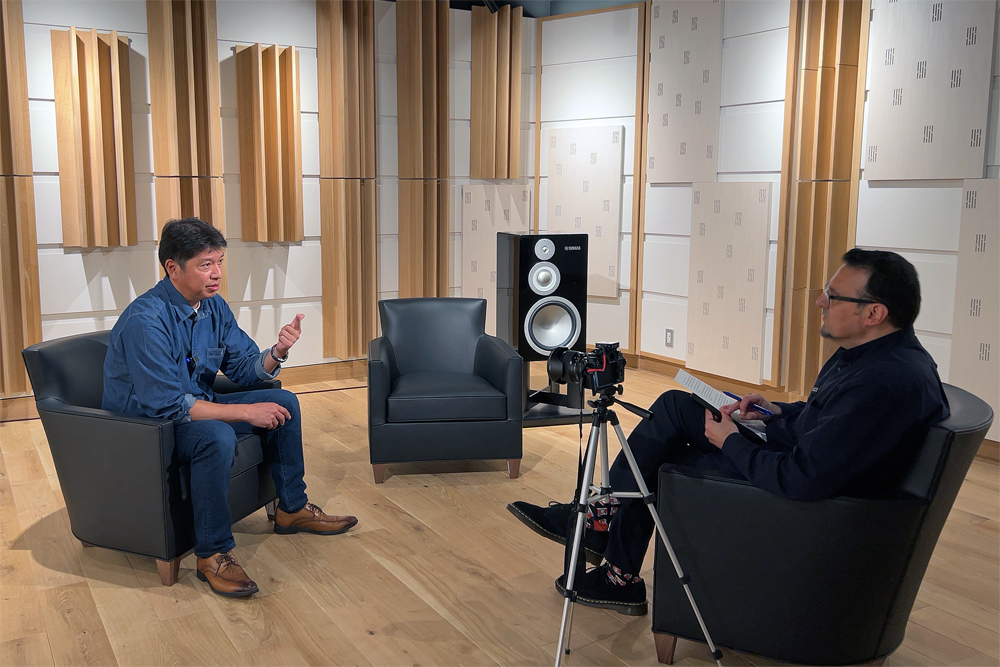 Susumu Kumazawa being interviewed by Edgar Kramer.
Susumu Kumazawa being interviewed by Edgar Kramer.
Their mission: to direct and express the True Sound philosophy via Yamaha’s audio catalogue – especially the 5000 series. The ideology is applied right from the early stages of product development, through multiple phases, and on to the final sonic performance sign-off. Finally, once all is approved, the product is moved on for the commencement of the manufacturing processes. Other considerations are product strategy – in terms of how it may occupy and endure within its market position – and assisting in developing marketing strategies which are product relevant.
It’s worth mentioning that the sound quality evaluations also include a number of Yamaha personnel who are deemed appropriate listening panel contributors. Yamaha Home Audio Group colleagues are also trained by the True Sound team to develop listening skills.
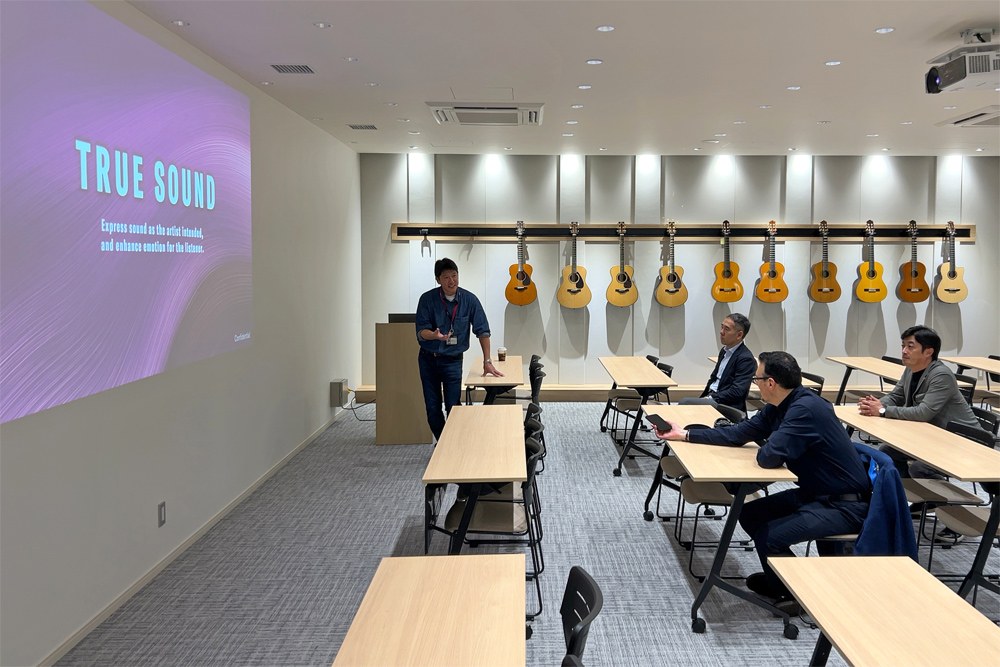 Kumazawa-san heads a True Sound presentation.
Kumazawa-san heads a True Sound presentation.
It was also in the True Sound Room where I interviewed members of the team. You’ll find the short video interviews here for Part 1 and then Part 2 here on the SoundStage! Network’s YouTube channel. Very much worth watching for further insights into the True Sound ideology.
Artistic Endeavours
Across the board, but most especially via the 5000 series products, Yamaha’s mandate is to capture the listener’s emotion and engagement by striving to “express the sound as the artist intended”. You could count in one severed-fingered hand the companies around the globe which, by way of ‘hands-on’ practice, truly, deeply understand that very sentence.
What I mean to emphasise is that Yamaha is a company with almost one-and-a-half centuries of history. It produces a spectrum of products spreading from musical instrument of just about all varieties, to recording studio electronics, monitors (love it or not, the NS-10 nearfield monitor is almost ubiquitous in studios around the world) and software, to sound reinforcement products up to arena/stadium level, and finally, entry level to high-end music reproduction systems for home Hi-Fi.
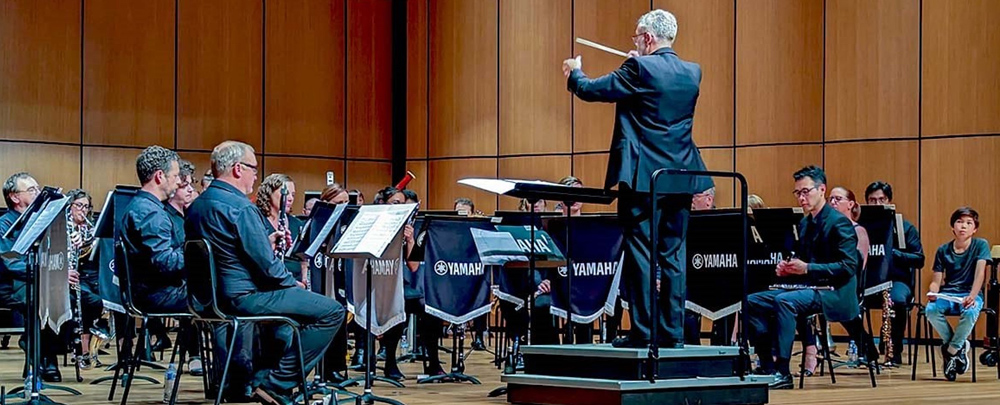 The Yamaha Wind Orchestra.
The Yamaha Wind Orchestra.
Yamaha also collaborates with music artists, across all genres, nurtures young musical talent via generous sponsorships, and has developed associations with some of the best orchestras in the classical music world.
An Expression of True Sound – A Room Without a View
We continue our journey through the labyrinthine Kakegawa facility. In a dedicated wing of the factory’s brand new extension, we find Yamaha’s custom-engineered True Sound Room; a further realisation of Yamaha’s efforts to both evolve and refine the ideology.
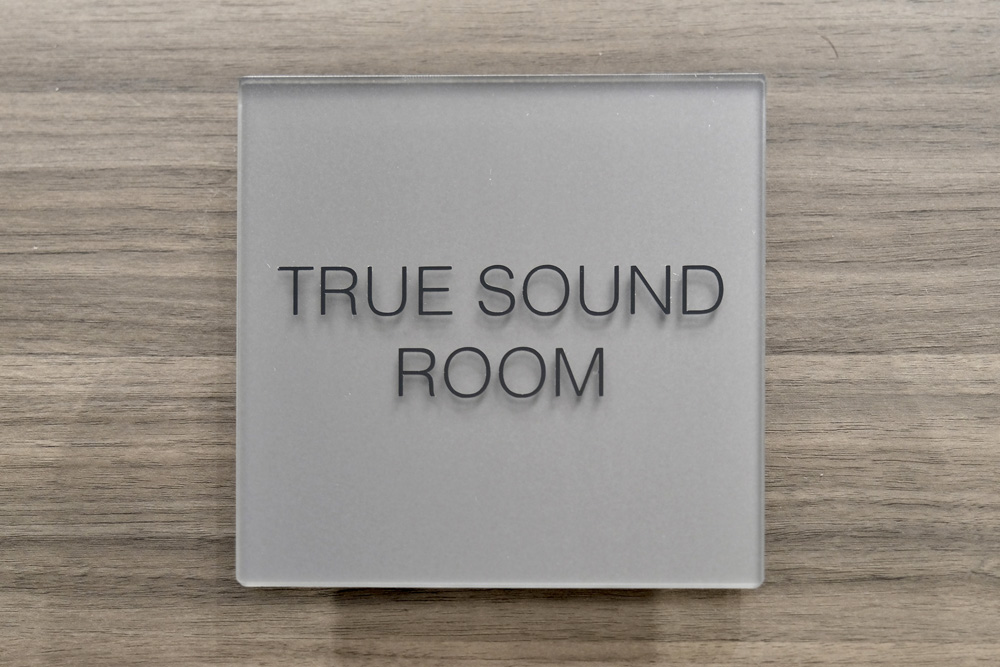
At the time of my visit, the room was about 90 percent finalised and, I’m told, I’m the first member of the Western media to experience this extraordinary music listening environment.
The True Sound Room is nicely dimensioned at precisely 5.766m (Width), 8.747m (Depth), and 2.668m (Height). The dimensions were arrived at by a target to appropriately load the room when populated with various Yamaha electronics and loudspeaker products, but particularly the NS-5000 and the new NS-2000A models.
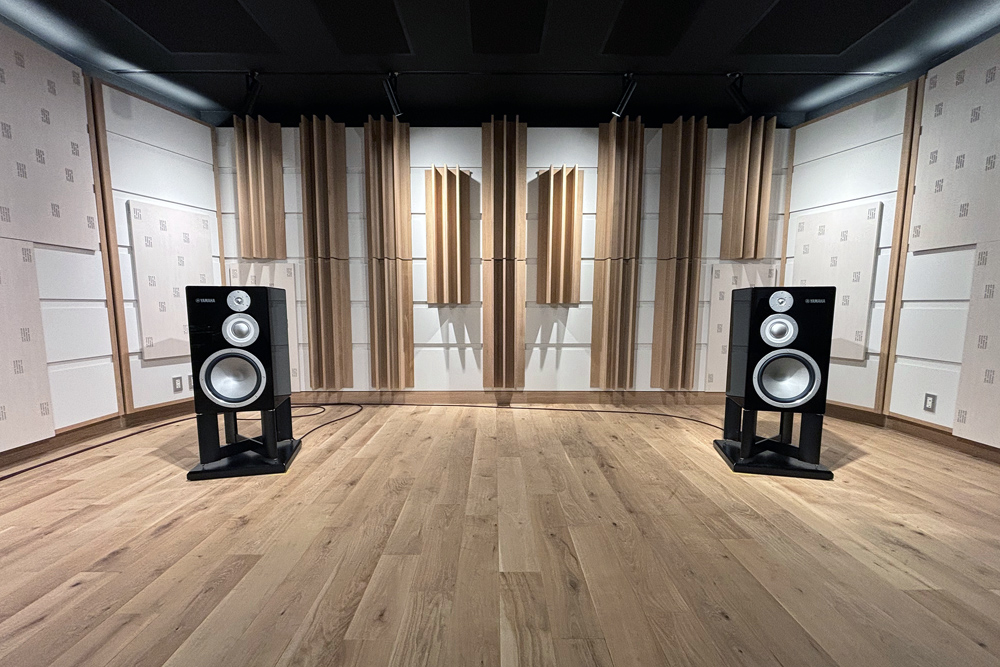
The acoustic ambience of the space was given meticulous attention. Yamaha Design Laboratory’s engineers, led by Eizo Amiya, have designed bespoke ‘Acoustic Conditioning Panels’ which they’ve mapped out in calculated positions on the walls and ceilings. Specifically, the ACP-2 panels, which are a second generation design, feature a multi-layer construction which absorbs sound down to the low-frequencies while also providing diffusion capabilities higher up the bandwidth. Throughout the room, dispersion and diffusion qualities are augmented by strategically placed deep-slat ‘Schrader’ wooden diffusor panels.
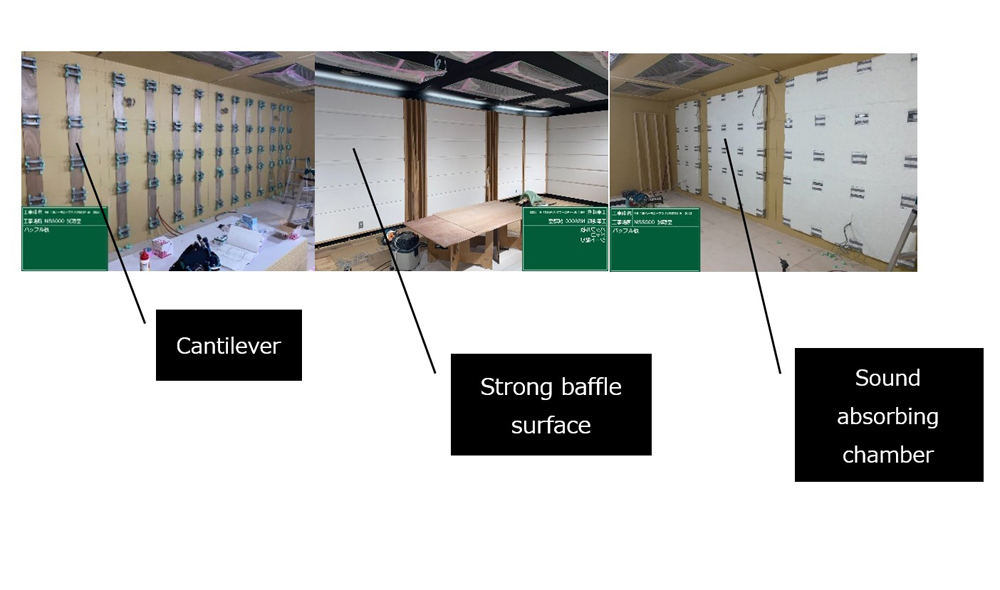
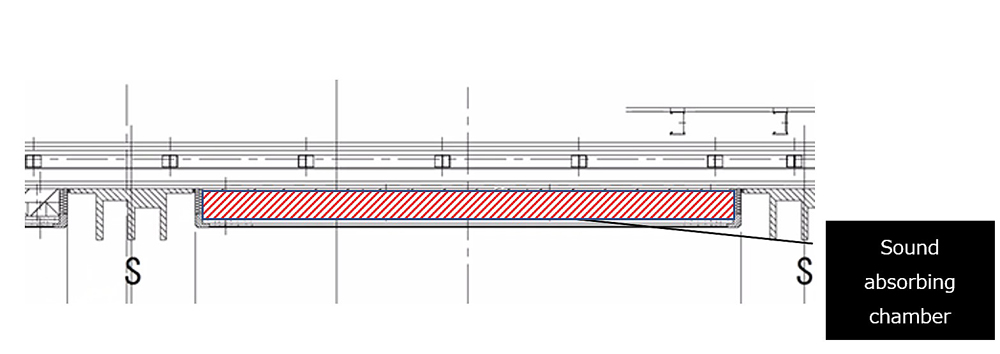
Effectively, this is a room-within-a-room construction. All wall surfaces were structurally strengthened and further reinforced with pillars and steel bracketing. A chamber, or void, was created between the outer and inner walls. Then, the inner walls were lined with the ACP-2 acoustic panelling and Schrader diffusor slats. All wall surfaces and panel mounting structures were separated with expansion joints to further eliminate vibrations. The Schrader diffusors employ a “Dokko hanging system (Japanese hook structure) so it can be freely moved, freely installed, and rigidly fixed.”
The Schrader diffusors were placed “at the antinode position where the standing wave is divided into integers. In the antinode position, rigidness is desired. Therefore, the base material used in this project is European oak wood blocks which is solid oak and hardwood.” The room’s floor also employs solid oak construction while the ceiling features a void “chamber”, said to be effective down to 250 Hz, between the sound-absorbing panels and the hard wall surface.
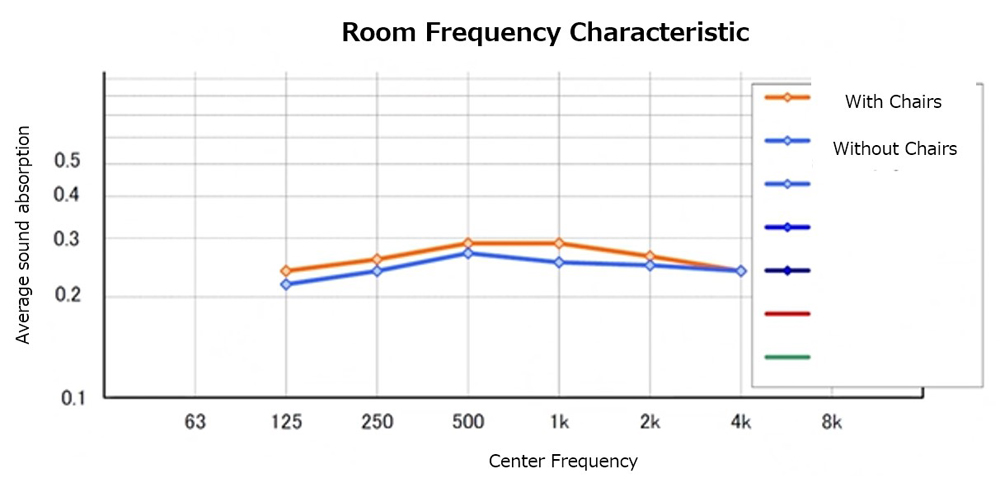
As Yamaha explained, “The True Sound Room was designed by the development team of Yamaha which does acoustic room engineering and soundproof room design. The True Sound Room was made based on the knowledge and experience of this development team… The room has a flat acoustic characteristic so that the harmonic overtone of musical instruments could be accurately reproduced.”
Of course, there’s a wealth of electronics at Yamaha’s disposal. At the time of my visit, the excellent flagship C-5000 and M-5000 preamplifier/power amplifier combination was fed signal via the Gigantic-Tremendous GT-5000 turntable. Loudspeakers were the top-of-the-line NS-5000. While open to changes and different configurations, this is the official resident system. True Sound Team Leader Susumu Kumazawa played DJ, spinning a variety of music including some jazz and 1970s pop classics. Kumazawa-san is a knowledgeable and avid music lover with, as you’d expect, a great ear for tuning sonic performance.
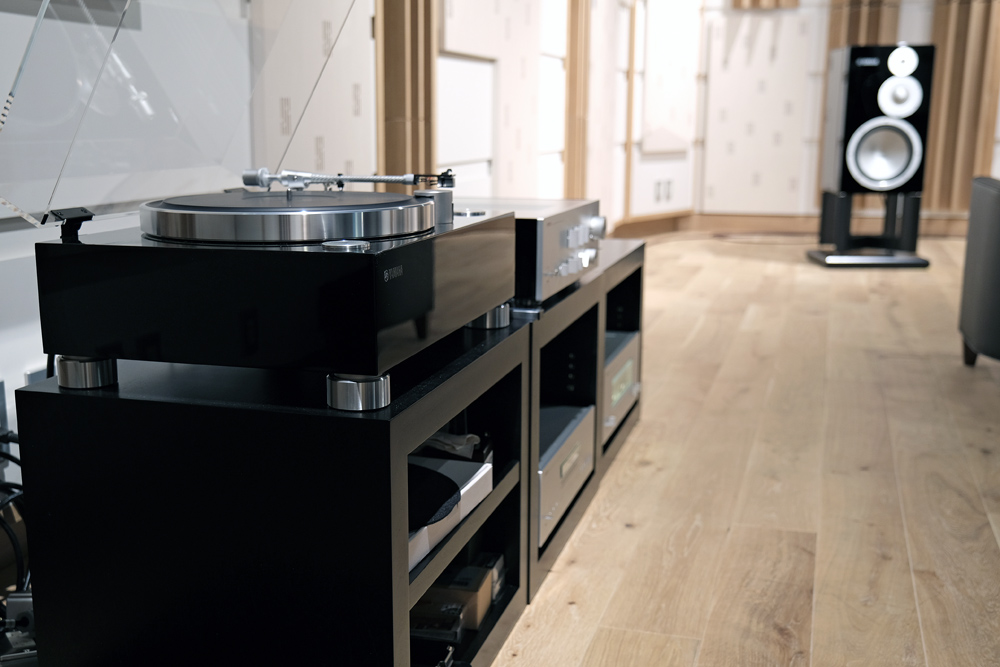
Even without a note being played, I sense the excellent acoustic signature of the True Sound Room. Yes, it’s an ambience you sense and then you hear it in voices when in conversation. You know when the room sounds right. I hear it in my own music room too. In the True Sound Room, with music playing, I hear exceptional dynamic range, an open and sizable soundfield spreading wide, deep and tall. There’s remarkable detail retrieval and excellent presence in male and female vocals. The music selection via the Yamaha system encourages engagement – I find myself toe-tapping and scatting along with Ray Brown and his backing jazz maestros and bopping along with Steely Dan’s Donald Fagan and Walter Becker.
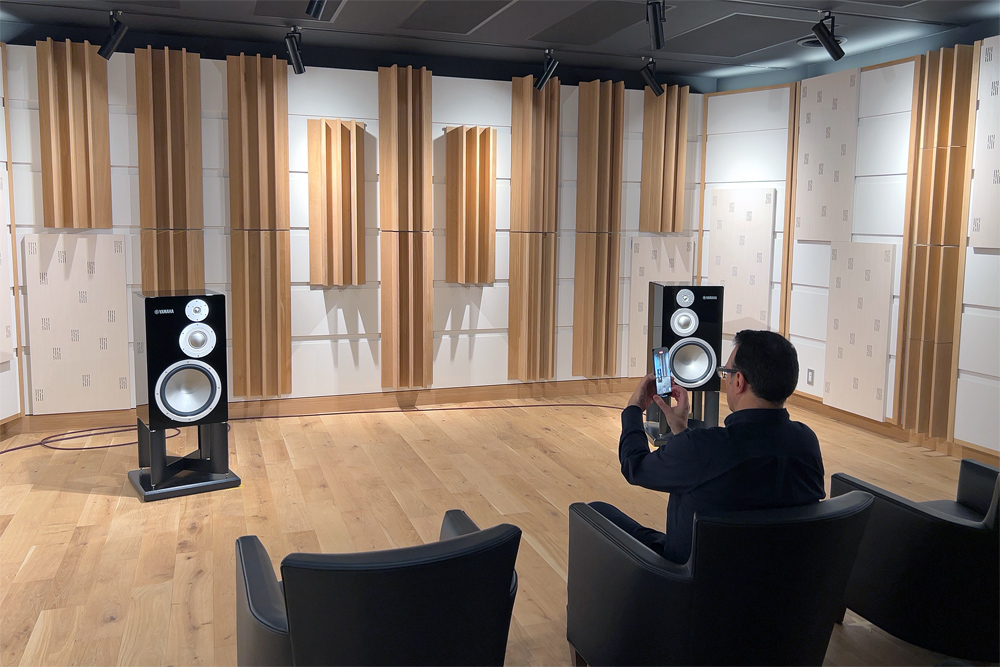
In this optimised acoustic environment, company engineers and key personnel can evaluate and contribute subjective impressions on a variety of products. Yet, it was made clear to me that this would be a place where music can also be experienced without intellectual analysis but for pure enjoyment. With that in mind, I’m told eventually, members of the public will also be privy to the musical wonders of the True Sound Room via the resident audio system comprising Yamaha’s flagship 5000 series products.
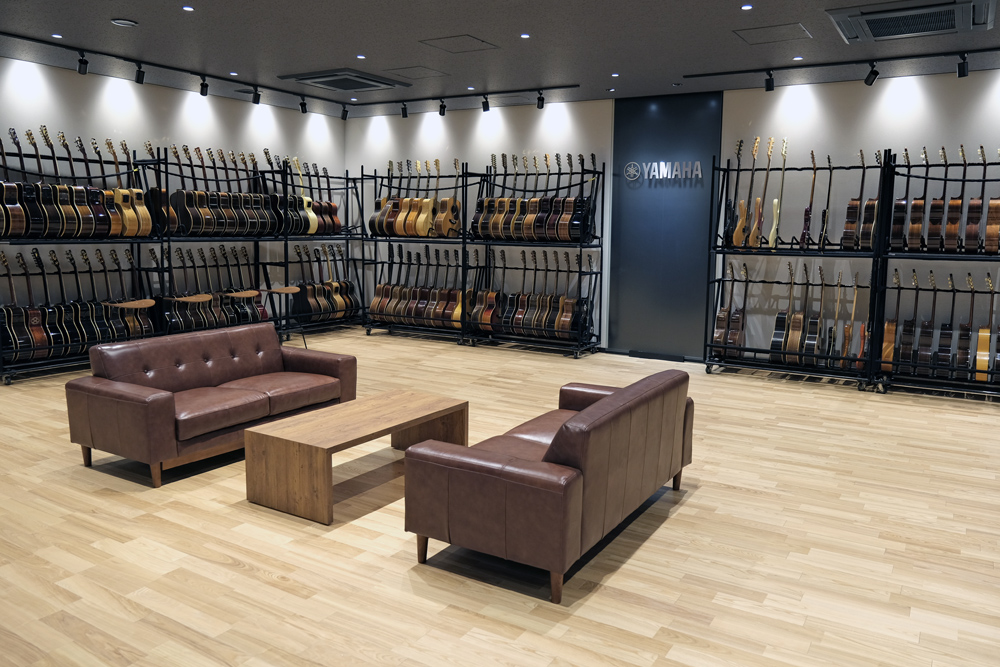
Incidentally, a large space next door to the True Sound room serves as a guitar exhibit and evaluation environment. Lined across the walls are battalions of Yamaha’s guitar offerings. There are acoustic and electric persuasions, plus, a subset of bass four stringers also there for evaluation. A super quick, and very rough count, had my head spinning at over 200 samples, including some very special bespoke models destined for famous musicians, I’m sure.
Conclusion
I have visited Yamaha in Japan a number of times now. Each time, I leave with a deeper understanding and a pronounced admiration for this exceptional and unique corporation. At this last visit, I discovered how the company has further taken its True Sound philosophy and built on it. Quite literally. For Yamaha, ‘True Sound’ is not just a catchcry, nor a superficial marketing jingle without an expressed application. It’s not an idea attached to products for promotional cachet. And in the True Sound Room, this is a practical, vitally dynamic manifestation of the term. It’s also a showcase for Yamaha’s depth of engineering resources and talent.
While in Japan, I also attended the Tokyo International Audio Show (TIAS). There, I met up with Yamaha’s Consumer Audio Senior General Manager Yoshi Tsugawa. I had a long and engaging conversation with Tsugawa-san, who was generous with both his time and the insights he shared. Through our lengthy discussions, he made a comment which not only stirred me, but it encapsulated the intention and ideals behind the True Sound term.
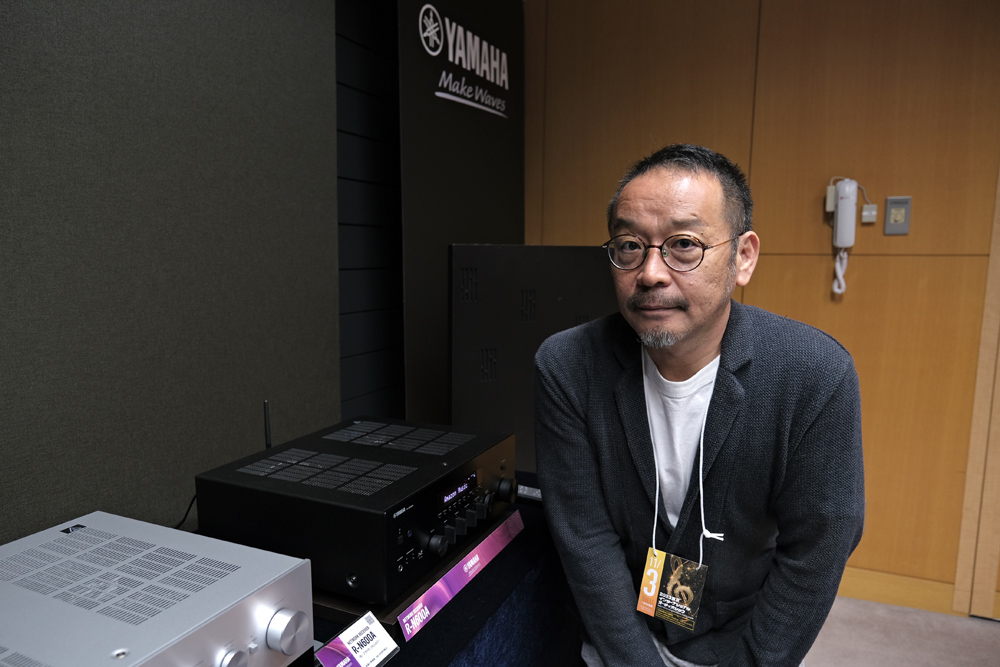 Yoshi Tsugawa Consumer Audio Senior General Manager
Yoshi Tsugawa Consumer Audio Senior General Manager
“True Sound is a way to combine people, to align people both within Yamaha and the end consumer. Also, because of changes in human life, our likes and dislikes are… fragmented. I think this has resulted in more people enjoying quality sound, there’s a deeper engagement drawing more people from the general public to the quality audio world. And we have more passion for this aspect of the home entertainment area. For Yamaha, True Sound is an identity.”
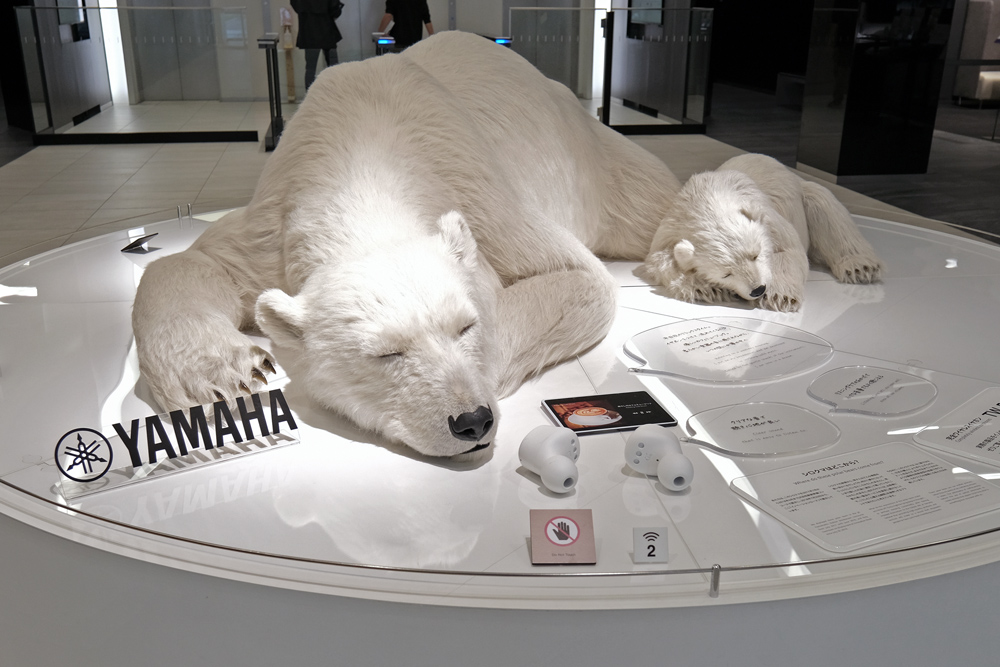
Yes, Tsugawa-san, I hear you. It’s passion which drives the high-end audio space. It’s the creativity of the artists and music creators and the makers of the devices that reproduce music in our homes. Yamaha’s True Sound ideology reflects that passion. Truly.
… Edgar Kramer
This email address is being protected from spambots. You need JavaScript enabled to view it.
Australian Distributor: Yamaha Music Australia
+61 1800 805 413
au.yamaha.com/en/products/audio_visual/index.html
Yamaha Corporation
10-1, Nakazawa-cho, Naka-ku
Hamamatsu Shizuoka 430-8650
Japan
+81 (53)460-2211
www.yamaha.com

